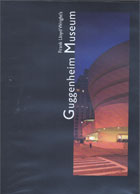
Frank Lloyd Wright’s Guggenheim Museum 2010
Distributed by Microcinema International/Microcinema DVD, 2169 Folsom Street, Suite M101, San Francisco, CA 94110; 415-447-9750
Produced by Timothy Sakamoto
Directed by Timothy Sakamoto
DVD, color, 85 min.
Jr. High - Adult
Architecture, Art, Biography, Popular Culture
Date Entered: 04/22/2011
Reviewed by Caron Knauer, La Guardia Community College, Long Island City, New YorkNarrated by Harvard University art and architecture professor Neil Levine, this documentary tells the story of New York City’s most unique building, the circularly grand Solomon R. Guggenheim Museum. Frank Lloyd Wright, not a mainstream architect at the time, was commissioned by the artist Hilla Rebay, Guggenheim’s art adviser, to design it. Ironically, Levine says, Wright built his dream building in a city he supposedly despised, to hold nonobjective or abstract art, which he also despised. Wright devoted sixteen years, some of them contentious, to the project, and died six months before ten thousand people came to visit the weekend it opened to the public on October 21, 1959.
Its most unusual design, a double helix spiral or ziggurat, was inspired by Mesopotamian temples, and its dazzling domed top, though compromised from Wright’s original vision, help create a “kinesthetic experience.” The “singular space is continuous from the top to the bottom,” Levine says, and “the circulation system (the ramp) continuous with the installation, creates a total unity.” Levine discusses several of the Guggenheim’s more exhilarating exhibitions, including those of Matthew Barney, Jenny Holzer, Donald Judd, and Nam June Paik.
Levine, sitting in front of bookcases, occasionally talking casually to his wife or collaborator, Timothy Sakamoto, is a charming narrator with an expert’s eye for every nuance of the museum’s history, and its design, space, light, and art. The mostly still photographic images provide a narrative arc, and the bouncy music by Josh Sklair is pleasant. But the film would have been more entertaining if Levine had included interviews with artists or other art and architectural experts. Still, Levine’s lecture is a substantive and well-researched scholarly resource.